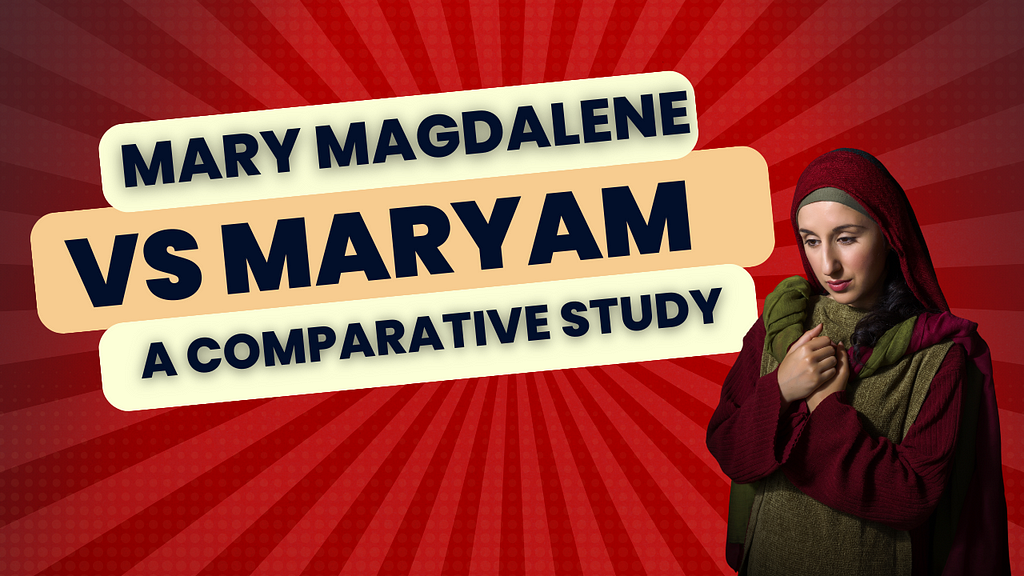
Mary Magdalene and Maryam hold significant roles in two major religious traditions, Christianity and Islam, as portrayed in the Bible and the Quran, respectively. While their stories share some commonalities, there are also notable differences in the way they are presented and the emphasis placed on their narratives. This article aims to provide a comparative study of Mary Magdalene in the Bible and Maryam in the Quran, exploring their roles, characteristics, and the theological implications associated with their stories.
Mary Magdalene in the Bible
Background and Introduction
Mary Magdalene is a prominent figure in the New Testament of the Christian Bible. She is often identified as a close follower of Jesus Christ and plays a crucial role in the narratives surrounding his crucifixion and resurrection.
Role and Relationship with Jesus
Mary Magdalene is frequently mentioned in the Gospels, with a notable presence during the crucifixion and resurrection of Jesus. In the Gospel of Luke, she is described as one of the women who traveled with Jesus and supported him financially. In the Gospel of Mark, Mary Magdalene is mentioned as one of the women who witnessed the crucifixion from a distance.
Resurrection Narrative
One of the most significant moments involving Mary Magdalene is her presence at the tomb after Jesus’ crucifixion. According to the Gospel of John, Mary Magdalene is the first to encounter the resurrected Jesus. This encounter is a pivotal event in Christian theology, emphasizing the significance of resurrection and the role of women as witnesses.
Maryam in the Quran
Background and Introduction
Maryam, or Mary, holds a revered status in Islam and is considered one of the most virtuous and pious women in Islamic tradition. Her story is primarily found in the Quran, where she is mentioned in various chapters.
Virgin Birth and Miracles
Similar to the Christian narrative, the Quran also emphasizes the miraculous birth of Jesus to Maryam. The Quranic account underscores Maryam’s piety and devotion to God, portraying her as a model of righteousness. The Quran describes the angelic announcement to Maryam about the birth of Jesus, emphasizing her chaste and virtuous nature.
Maryam in the Context of Prophethood
In Islam, Maryam is not only the mother of Jesus but also a figure in her own right. The Quran acknowledges her as a righteous woman chosen by God and a sign for humanity. Maryam’s story serves to emphasize the miraculous nature of Jesus’ birth and the prophethood of Jesus within the Islamic tradition.
Comparative Analysis
Similarities
Both Mary Magdalene and Maryam are revered as virtuous women in their respective religious traditions. Both are associated with miraculous events, with Mary Magdalene witnessing the resurrection of Jesus, and Maryam experiencing the virgin birth of Jesus. In both cases, these events hold significant theological implications for their respective faiths.
Differences
While the stories share similarities, there are notable differences in their emphasis and the theological messages conveyed. Mary Magdalene’s role in the Christian narrative is closely tied to the resurrection of Jesus and the establishment of Christian beliefs in his divinity. On the other hand, Maryam’s story in the Quran places a strong emphasis on her own piety and the prophethood of Jesus, rather than on her role as a witness to resurrection.
The stories of Mary Magdalene in the Bible and Maryam in the Quran provide rich narratives that hold profound significance in the Christian and Islamic traditions, respectively. While both women are celebrated for their virtue and piety, the emphasis on their roles and the theological messages they convey differ across the two traditions. Exploring these narratives deepens our understanding of the shared and distinctive elements in Christianity and Islam, highlighting the cultural and theological nuances that shape these beloved figures in religious history.
Mary Magdalene in the Bible and Maryam in the Quran: A Comparative Study was originally published in SacredSagasStudio on Medium, where people are continuing the conversation by highlighting and responding to this story.